The Civet comprises a group of small carnivorous mammals. These little creatures are part of the Viverridae family, along with Genets, Palm Civets, Binturongs, and Oyans.
Researchers recognize 20 different species in the family, the most well-known species being the African Civet, and this article will focus specifically on that species, which we’ll refer to as “the African.” Read on to learn about the Civet.
Description of the Civet
Africans are interesting predators that look like a mixture between a hyena, a cat, and a raccoon. Their coats are tan/grey with black stripes, blotches, and spots.
Their faces have masks like raccoons, and they have spots down either side of their bodies, and stripes down their tails. This species measures about 4 ft. long, with 2 ft. of body and 2 ft. of tail. Most Africans weigh about 30 lbs. or so.
Interesting Facts About the Civet
This species is an interesting little predator. They are lithe and energetic, and despite their small stature they are competent hunters. Learn more about what makes African Civets unique below.
- Civetone – Africans produce a unique musk to mark their territory and communicate with one another. Humans use this oily substance as a component of some perfumes. In fact, people keep these animals in farms to collect their musk and extract Civetone.
- Dangerous Prey – This species can hunt and kill a variety of dangerous food items. They eat a number of different poisonous millipedes and venomous snakes, including spitting cobras. Africans can also eat some poisonous berries and fruits.
- Mini-Mane – These Civets also have a strip of hair running down their backs known as a “mane.” Unlike a lion’s mane, Africans can lay their hair flat against their backs. However, when excited or frightened the manes on their backs stand up straight.
Habitat of the Civet
Most Africans prefer habitats with trees, shrubbery, or tall grass to hide in. They inhabit forests, grasslands, scrublands, savannahs, and more. Unlike some other African wildlife, Civets do not stray far from water sources. They live in close proximity to rivers, lakes, and streams. Other Civet species live in a variety of different habitats.
Distribution of the Civet
This species lives throughout much of sub-Saharan Africa. Their range extends from the region south of the Sahara Desert to Namibia, Botswana, and northern South Africa. While they live throughout much of Africa, their populations avoid arid regions and inhabit areas with permanent water sources instead.
Diet of the Civet
African Civets are omnivores, which means that they eat plants and animals. Their diet usually consists of fruits, rats, mice, insects, eggs, snakes, frogs, lizards, birds, and carrion.
They have surprisingly resilient stomachs, and can eat many types of foods that other animals can’t. They eat poisonous plants, venomous snakes, and poisonous insects, and can also feed on extremely decayed carrion.
Civet and Human Interaction
People and African Civets interact in a number of different ways, none of which are positive. Humans hunt them for several reasons. They eat them as bushmeat, and they hunt them in retaliation for killing livestock, usually poultry.
As discussed above, people also keep these animals in farms to harvest their oily musk gland secretions. Despite these interactions, the IUCN lists African Civets as Least Concern, though other Civets are at a greater risk of extinction.
Domestication
Humans have not domesticated African Civets in any way.
Does the Civet Make a Good Pet
No, these animals do not make good pets. All of the various Civet species make poor pets, as they are wild animals, and do not enjoy interacting with humans. In many places, it is also illegal to own one as a pet.
Civet Care
In zoos, Civets live in relatively large enclosures with a variety of shrubbery, tall grasses, artificial caves, and other hiding places.
Zookeepers provide them with a number of different types of enrichment, including new scents, hidden food, puzzle toys, “meat” popsicles, and more. They feed them a variety of foods, including fruits and berries, commercially produced carnivore diet, bones, rats, mice, and more.
Behavior of the Civet
African Civets spend most of their day sleeping or resting and most of their night hunting and patrolling their territory. Occasionally they forage in the early morning or late afternoon. Outside of the breeding season, Africans live and hunt alone.
Their territories border those of the opposite sex, but they do not interact unless they are mating. They use their urine, feces, and musk glands to mark the edges of their territories and communicate with their neighbors.
Reproduction of the Civet
Females produce two or three litters of young per year. Their gestation period lasts about two months, and most litters contain two or three offspring. It takes just five days for the babies to begin learning to walk, and two weeks for them to begin playing.
When they are six weeks old, the mother weans them off her milk. Once they are two months old, they can catch their own prey.




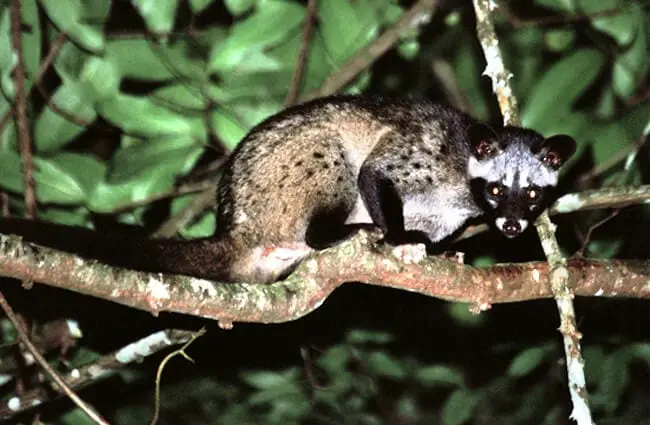
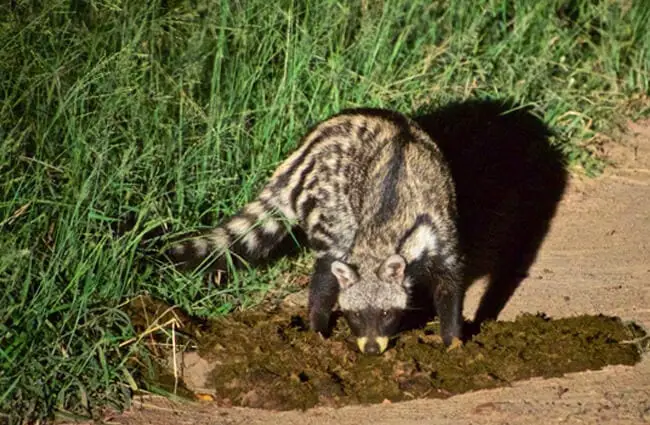
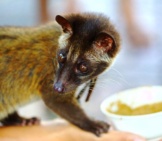
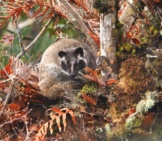
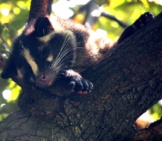

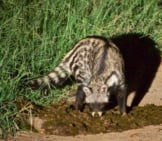
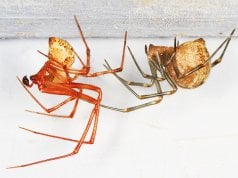
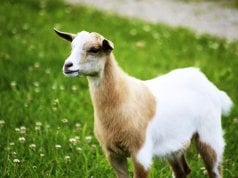











![Red Angus Closeup of a beautiful Red Angus cowPhoto by: U.S. Department of Agriculture [pubic domain]https://creativecommons.org/licenses/by/2.0/](https://animals.net/wp-content/uploads/2020/03/Red-Angus-4-100x75.jpg)

